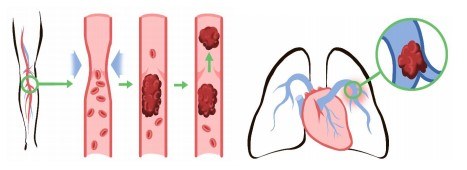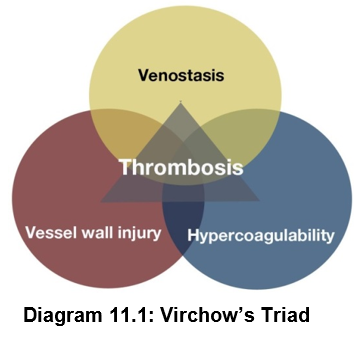1. Office of the Surgeon G, National Heart L, Blood I. Publications and Reports of the Surgeon General. In: The Surgeon General's Call to Action to Prevent Deep Vein Thrombosis and Pulmonary Embolism. Rockville (MD): Office of the Surgeon General (US); 2008.
2. Carlile M, Nicewander D, Yablon SA, et al. Prophylaxis for venous thromboembolism during rehabilitation for traumatic brain injury: A multicenter observational study. Journal of Trauma - Injury, Infection and Critical Care. 2010;68(4):916-923.
3. Cifu DX, Kaelin DL, Wall BE. Deep venous thrombosis: incidence on admission to a brain injury rehabilitation program. Arch Phys Med Rehabil. 1996;77(11):1182-1185.
4. Denson K, Morgan D, Cunningham R, et al. Incidence of venous thromboembolism in patients with traumatic brain injury. American journal of surgery. 2007;193(3):380-383; discussion 383-384.
5. Geerts WH, Code KI, Jay RM, Chen E, Szalai JP. A prospective study of venous thromboembolism after major trauma. The New England journal of medicine. 1994;331(24):1601-1606.
6. Haddad SH, Arabi YM. Critical care management of severe traumatic brain injury in adults. Scandinavian journal of trauma, resuscitation and emergency medicine. 2012;20:12.
7. Watanabe, Sant. Common medical complications of traumatic brain injury. . Physical Medicine and Rehabilitation: state of the art reviews. 2001;15:283-299.
8. Geerts WH, Jay RM, Code KI, et al. A comparison of low-dose heparin with low-molecular-weight heparin as prophylaxis against venous thromboembolism after major trauma. The New England journal of medicine. 1996;335(10):701-707.
9. Cifu DX, Caruso D. Traumatic brain injury. Demos Medical Publishing; 2010.
10. Pellecchia CM, Kory PD, Koenig SJ, et al. ACCURACY OF CRITICAL CARE PHYSICIANS IN THE ULTRASOUND DIAGNOSIS OF DEEP VENOUS THROMBOSIS (DVT) IN THE ICU. Chest. 2009;136(4):49S-49S.
11. Albert RK, Spiro SG, Jett JR. Clinical respiratory medicine. 3rd ed. Philadelphia: Mosby / Elsevier; 2008.
12. Fedullo PF, Tapson VF. Clinical practice. The evaluation of suspected pulmonary embolism. The New England journal of medicine U6 - ctx_ver=Z3988-2004&ctx_enc=info%3Aofi%2Fenc%3AUTF-8&rfr_id=info%3Asid%2Fsummonserialssolutionscom&rft_val_fmt=info%3Aofi%2Ffmt%3Akev%3Amtx%3Ajournal&rftgenre=article&rftatitle=Clinical+practice+The+evaluation+of+suspected+pulmonary+embolism&rftjtitle=The+New+England+journal+of+medicine&rftau=Fedullo%2C+Peter+F&rftau=Tapson%2C+Victor+F&rftdate=2003-09-25&rfteissn=1533-4406&rftvolume=349&rftissue=13&rftspage=1247&rft_id=info%3Apmid%2F14507950&rftexternalDocID=14507950¶mdict=en-US U7 - Journal Article. 2003;349(13):1247.
13. Stein EG, Haramati LB, Chamarthy M, Sprayregen S, Davitt MM, Freeman LM. Success of a Safe and Simple Algorithm to Reduce Use of CT Pulmonary Angiography in the Emergency Department. American Journal of Roentgenology. 2010;194(2):392-397.
14. Tran HA, Gibbs H, Merriman E, et al. New guidelines from the Thrombosis and Haemostasis Society of Australia and New Zealand for the diagnosis and management of venous thromboembolism. Medical Journal of Australia. 2019;210(5):227-235.
15. ONF-INESSS. Clinical Practice Guideline for the Rehabilitation of Adults with Modarate to Severe TBI. 2016.
16. Gersin K, Grindlinger GA, Lee V, Dennis RC, Wedel SK, Cachecho R. The efficacy of sequential compression devices in multiple trauma patients with severe head injury. The Journal of trauma. 1994;37(2):205-208.
17. Kurtoglu M, Yanar H, Bilsel Y, et al. Venous thromboembolism prophylaxis after head and spinal trauma: Intermittent pneumatic compression devices versus low molecular weight heparin. World Journal of Surgery. 2004;28(8):807-811.
18. Praeger AJ, Westbrook AJ, Nichol AD, et al. Deep vein thrombosis and pulmonary embolus in patients with traumatic brain injury: a prospective observational study. Critical care and resuscitation : journal of the Australasian Academy of Critical Care Medicine. 2012;14(1):10-13.
19. Minshall CT, Eriksson EA, Leon SM, Doben AR, McKinzie BP, Fakhry SM. Safety and efficacy of heparin or enoxaparin prophylaxis in blunt trauma patients with a head abbreviated injury severity score >2. The Journal of trauma. 2011;71(2):396-399; discussion 399-400.
20. Tran HA, Gibbs H, Merriman E, et al. New guidelines from the Thrombosis and Haemostasis Society of Australia and New Zealand for the diagnosis and management of venous thromboembolism. Medical Journal of Australia. 2019;210(5):227-235.





